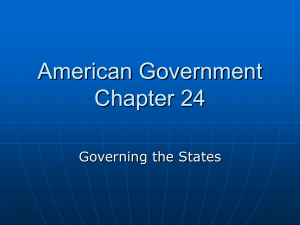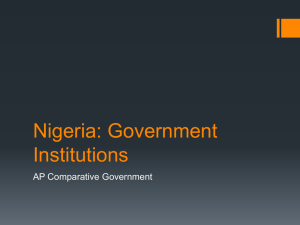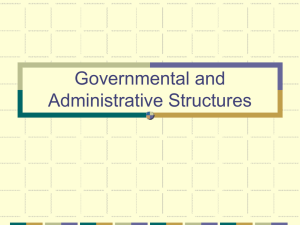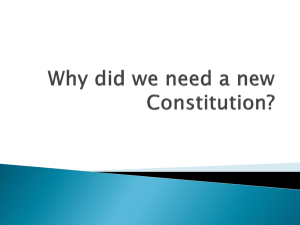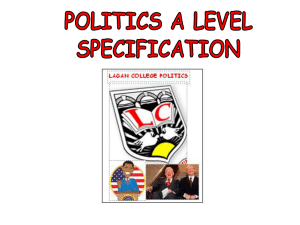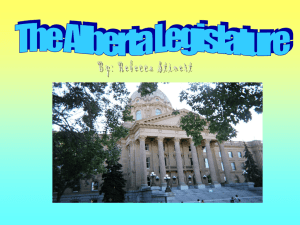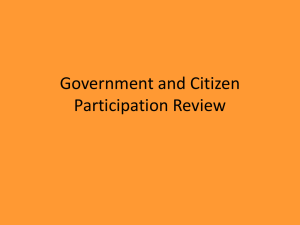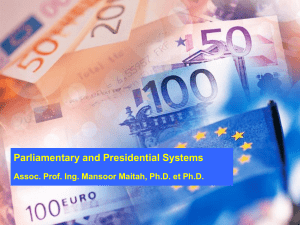1. CL
advertisement
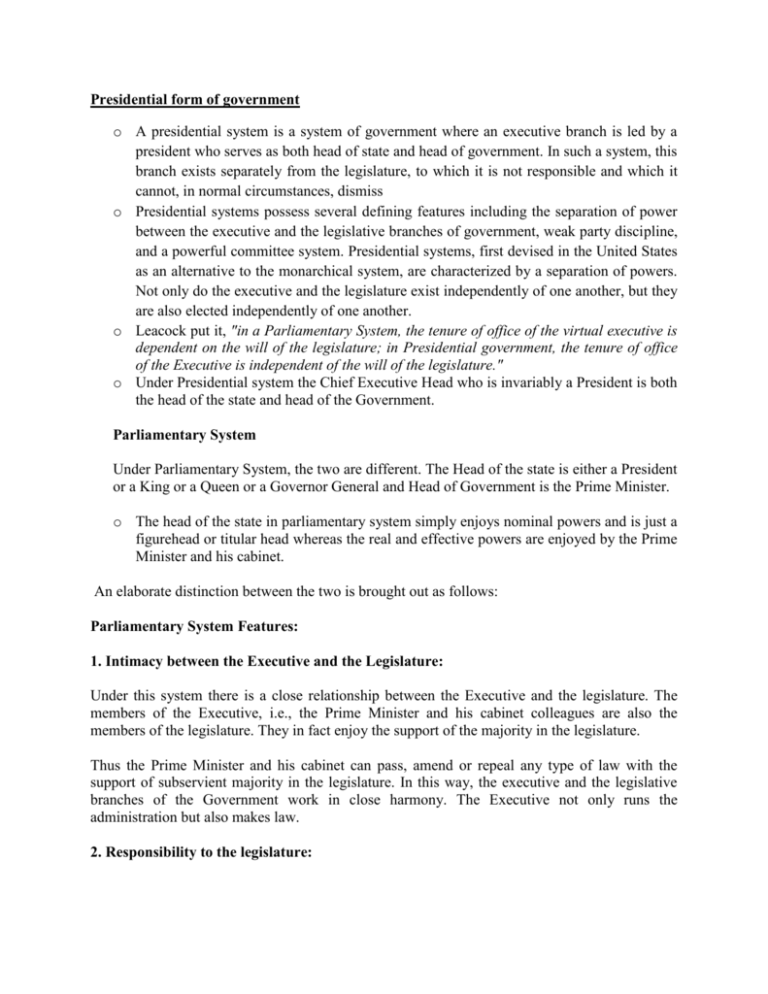
Presidential form of government o A presidential system is a system of government where an executive branch is led by a president who serves as both head of state and head of government. In such a system, this branch exists separately from the legislature, to which it is not responsible and which it cannot, in normal circumstances, dismiss o Presidential systems possess several defining features including the separation of power between the executive and the legislative branches of government, weak party discipline, and a powerful committee system. Presidential systems, first devised in the United States as an alternative to the monarchical system, are characterized by a separation of powers. Not only do the executive and the legislature exist independently of one another, but they are also elected independently of one another. o Leacock put it, "in a Parliamentary System, the tenure of office of the virtual executive is dependent on the will of the legislature; in Presidential government, the tenure of office of the Executive is independent of the will of the legislature." o Under Presidential system the Chief Executive Head who is invariably a President is both the head of the state and head of the Government. Parliamentary System Under Parliamentary System, the two are different. The Head of the state is either a President or a King or a Queen or a Governor General and Head of Government is the Prime Minister. o The head of the state in parliamentary system simply enjoys nominal powers and is just a figurehead or titular head whereas the real and effective powers are enjoyed by the Prime Minister and his cabinet. An elaborate distinction between the two is brought out as follows: Parliamentary System Features: 1. Intimacy between the Executive and the Legislature: Under this system there is a close relationship between the Executive and the legislature. The members of the Executive, i.e., the Prime Minister and his cabinet colleagues are also the members of the legislature. They in fact enjoy the support of the majority in the legislature. Thus the Prime Minister and his cabinet can pass, amend or repeal any type of law with the support of subservient majority in the legislature. In this way, the executive and the legislative branches of the Government work in close harmony. The Executive not only runs the administration but also makes law. 2. Responsibility to the legislature: In this system, the executive is responsible and accountable to the legislature for all its acts of omission and commission. The legislature can remove a cabinet by passing a vote of noconfidence against it whenever it so desires. Moreover, the legislature exercises its control over the executive through interpellation, adjournment motions so on and so forth. 3. Gap between Practice and Theory: In a Parliamentary System, there is always a gap between law and fact. According to law, all powers of the Government are vested in the Chief Executive head who may be President as in India or Governor General as in Canada or King or Queen as in U.K. In actual fact all his powers are exercised by the Cabinet which is created out of the majority party in the legislature. The Chief Executive head is just an ornamental head or figure head. All real and effective authority is exercised by the Cabinet. Presidential System 1. Separation between the Executive and the Legislature: The executive and the legislative branches of the government under the system are separate and independent of each other. The Executive which generally consists of a President and a cabinet subordinate to him runs the administration of the country. It has nothing to do with law-making. The President or his ministers are neither the members of the legislature nor do they enjoy any support of a majority in it. Sometimes, the President may belong to one Party and another Party may have a majority in the legislature and both may run at cross purposes. The fact is clear from the working of this system in U.S.A. 2. Presidential Executive is not responsible to the Legislature: Under this system the Executive is independent of the legislature and is not responsible to it. The President has a fixed tenure of office and cannot be removed by an adverse vote in the legislature. The ministers are appointed and dismissed by the President himself and the Legislature cannot touch them. Since none of them is a member of the Legislature, they cannot be subjected to any parliamentary criticism. 3. No Gap between Practice and Theory: Under this system, there is no such gap between law and fact. The Chief Executive head is the President in whom executive authority is vested by the constitution. He controls effectively his cabinet, which works under him and acts according to his wishes. This fact is clearly illustrated in the working of the Presidential System in the U.S.A.
